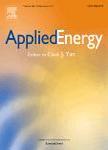版权所有:内蒙古大学图书馆 技术提供:维普资讯• 智图
内蒙古自治区呼和浩特市赛罕区大学西街235号 邮编: 010021

作者机构:Guangdong Univ Technol Guangdong Engn Res Ctr Green Mfg & Energy Efficie Guangzhou 510006 Guangdong Peoples R China Guangdong Univ Technol Sch Management Guangzhou 510006 Guangdong Peoples R China
出 版 物:《APPLIED ENERGY》 (实用能源)
年 卷 期:2022年第307卷
页 面:118314-118314页
核心收录:
学科分类:0820[工学-石油与天然气工程] 0817[工学-化学工程与技术] 08[工学] 0807[工学-动力工程及工程热物理]
基 金:National Natural Science Foundation of China [U1501248, 71971069, 51905109] Nat-ural Science Foundation of Guangdong Province [2021A1515011971]
主 题:High energy consumption machine Uncertainty Stream data Anomaly detection Unsupervised algorithm Energy efficiency optimization
摘 要:Uncertain working conditions will lead to abnormal energy consumption and energy loss of high energy consumption machines. Therefore, it is necessary to detect abnormal energy consumption data, which is designed to optimize energy efficiency. In this study, two unsupervised anomaly detection methods are proposed, suitable for dynamic real-time abnormal energy consumption detection. As for point anomaly, a Rain Flow-based Connectivity Outlier Factor algorithm is proposed, which is a connectivity-based detection method. While, as for collective anomaly, a Rain Flow-based Mean Nearest Neighbor Distance Anomaly Factor algorithm is proposed, which is a distance-based detection method. The proposed two algorithms adopt the methods of time sorting and piecewise cubic Hermite interpolating polynomial, respectively. The aim is to accurately locate anomalies in the time dimension. Then, abnormal energy consumption is automatically found by setting a dynamic real-time threshold. To verify the superiority and the effectiveness of the proposed method, the actual energy consumption data from aluminum extrusion enterprises are used for simulation experiments. The results demonstrate that the proposed method can detect anomalies quickly and accurately. Finally, this study presents an energy efficiency optimization framework based on anomaly detection. Our tests in energy management systems show that the proposed framework can optimize energy efficiency and reduce energy waste. This provides an effective solution to clean production and low carbon manufacturing of high energy consumption machines.